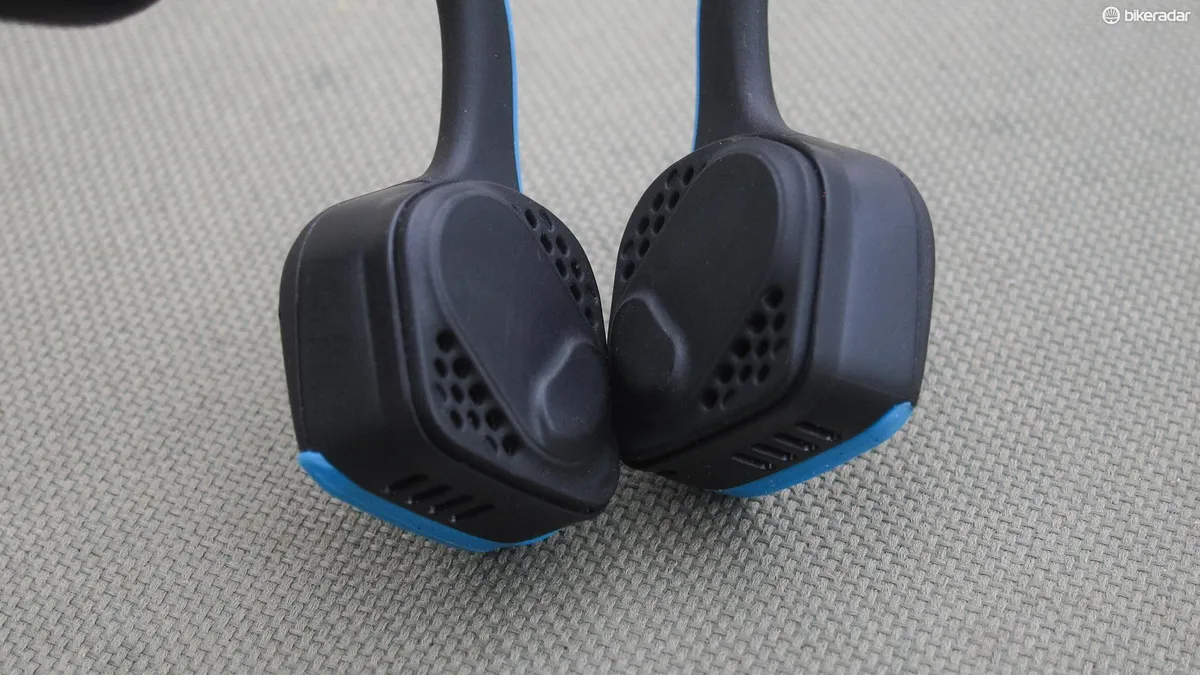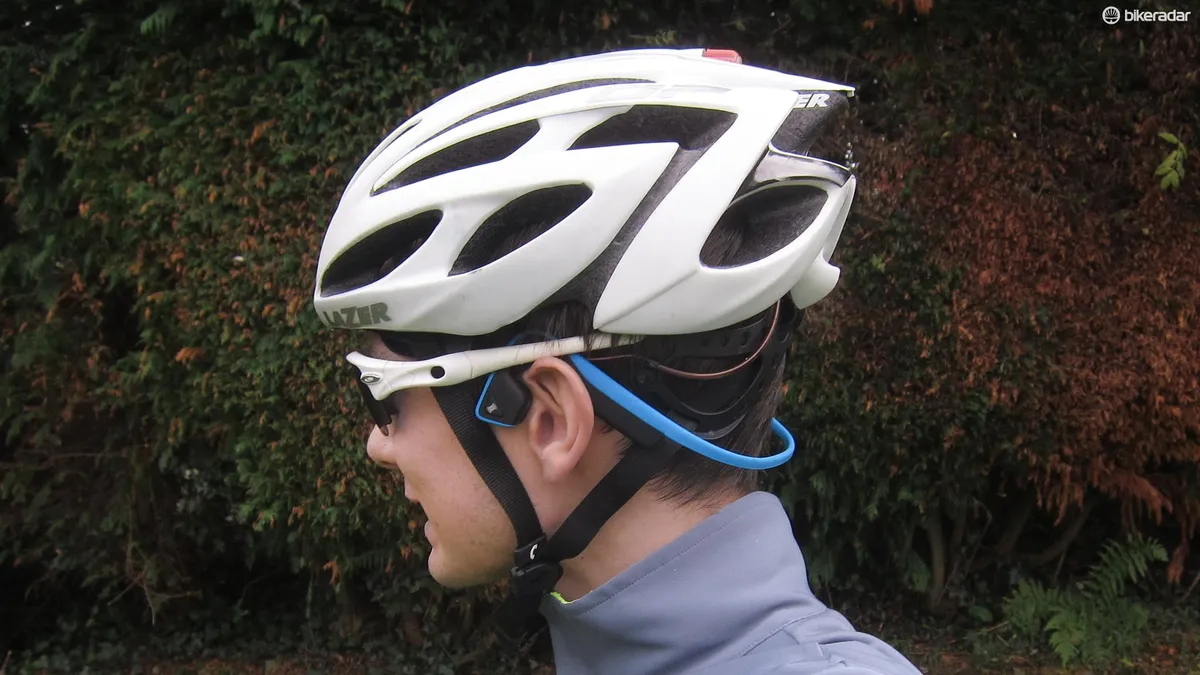Aftershokz’ Trekz Titanium are Bluetooth bone-conduction headphones designed to make listening to audio and receiving phone calls safer when you’re engaged in physical activity.
The wearing of headphones while cycling is a topic that invariably raises hackles. Whatever your feelings, there’s no question that conventional in-ear headphones (i.e. earbuds) block out ambient sound, and that can be a problem.
Bone conduction headphones — which transmit sound directly to the bones of your inner ear using pads that rest on your cheek bones in front of your ears — offer a potential solution. These leave your ears uncovered so you can still hear what’s going on in your surroundings,

Slick design and a simple interface
The Trekz Titanium headphones have a tidy one-piece design with a low profile band that wraps around the back of your head and acts as a spring to grip your head, reducing unwanted movement.They are reasonably light at 36g and have a pleasing soft-touch finish.

As these are Bluetooth headphones, there are no trailing wires to deal with, and Aftershokz has done an admirable job hiding circuitry and an internal battery in pods that sit either side of your head.The controls are nice and simple. The large multi-function button works as a simple one-touch play/pause so it’s easy to interrupt your audio if you need absolutely all of your hearing, or to answer the phone.
Volume is adjusted using the two small buttons on the right hand side, and the headphones speak to you with ‘Audrey Says’ voice prompts, saying words like “connected” so you don’t have to take the headphones off for a visual indication.

I found pairing with an Android phone to be extremely straightforward and reliable, although having it happen automatically any time Bluetooth is on is mildly irritating.



On one occasion I thought my phone was malfunctioning, when in fact it had paired with the headphones in my rucksack and was merrily pumping tunes into oblivion.
Trekz Titanium on the road
When you’re cruising at moderate speeds on quiet roads, the headphones fulfil their brief fairly well; you can hear both your audio and your surroundings.
Sound quality is acceptable rather than good, with a slight tinny quality and a lack of bass that’s no big deal for spoken word audio, but very noticeable if your musical taste tends towards the loud.
To put that in context, I’d say it’s no better (and possibly worse) than the super low-rent JVC HA-EB75 sports headphones I use day-to-day, which are widely available for less than £10.
When roads get busier or speeds increase beyond around 25mph/40kph, the limitations of the Aftershokz headphones become more evident.
Although the sound is effectively piped directly into your head, ambient noise still very much interferes with the listening experience because there’s nothing blocking it.
You could argue that this is as it should be — there’s less danger of a car taking you by surprise — but it makes listening to spoken word stuff frustrating because you tend to miss stuff.
You can turn the Trekz up quite loud, but beyond a certain point they produce an unpleasant tickling sensation in your inner ear.
Curiously, Aftershokz includes a set of earplugs in the box with the Trekz, stating in the manual: “Use with headphones in environments where it is safe to block out ambient noise, such as on an airplane or train.”
Obviously this excludes cycling, but I’d implore anyone who buys these not to use them at all on public transport, because they leak enough sound to be properly antisocial.
Fit is another respect in which I don’t think the Aftershokz are particularly well suited to cycling.

The over-the-ears design makes perfect sense for running, but it doesn’t work all that well when you throw a helmet and glasses into the mix.



Obviously this will depend on your precise physiology and your choice of riding gear, but I found that my helmet, glasses and headphones were constantly interfering with one another.
I haven’t tried the headphones for mountain biking (because I enjoy the sounds of strained breathing and small woodland creatures mocking my riding skills) but I’m pretty sure bumpy surfaces are going to exacerbate this issue.
Verdict — an imperfect solution for cycling
For relaxed riding on quieter roads the Trekz Titanium headphones aren’t half bad and I could definitely see them appealing to long distance cyclists who need a little entertainment to help pass the miles.
Having said that, while the tech is undeniably impressive, they just aren’t quite there for general riding — there are too many caveats to recommend them wholeheartedly.

